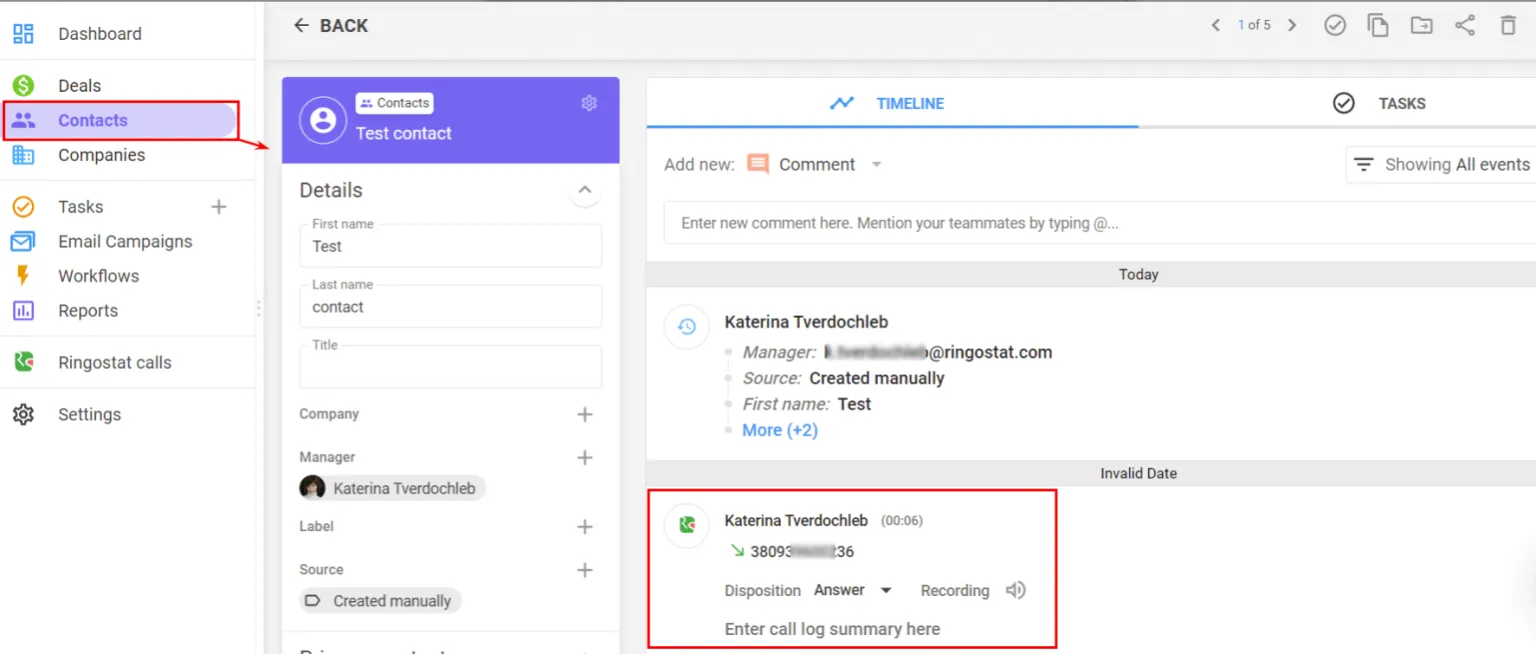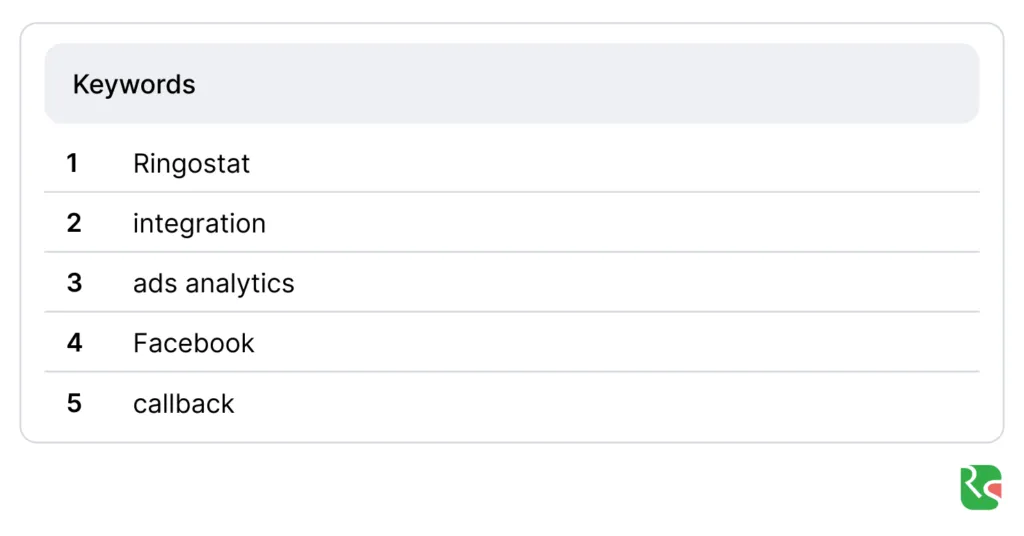First Phone Call with a Client — 3 Rules That Drive Sales


It takes just 0.1 seconds to form a first impression of your conversation partner — according to data from Willis & Todorov and Princeton psychologists. This means your communication style, first words, and even mood affect building relationships with clients.
And according to McKinsey research, conversation personalization increases company revenue by 40%. That's why we've prepared first conversation rules for you that consider all customer expectations. With them, you'll be able to build a solid foundation for effective sales from the first seconds of communication.
Imagine you've contacted a service company with an urgent issue, and in response you get a long silence from the agent, confusion about details, and questions that have already been discussed. It's unlikely you'll want to continue working with this company.
Your customers also expect quick resolution of their questions and problems, so quality preparation is half the journey to successfully closing a deal. It consists of personalization, active listening, and a valuable proposition. We'll discuss these next so you can build positive relationships with potential buyers.
McKinsey also found in their research that 71% of buyers expect personalized interaction from businesses. And 76% are disappointed when their expectations aren't met. If you don't offer a unique service or product, customers will go to competitors without hesitation. The modern market is overflowing with offers, and buyers can choose who to give their money to.
Personalization starts with the first words. Before calling, find out all available information about the user: name and data about previous communications, if any. For example, personal information and call and order history can be found in CRM — all data automatically enters the system if virtual telephony integration with CRM is configured.
This also protects against information loss or entry errors. It's an unpleasant situation if the client's name is Alexander and you address him as Igor. A company that makes mistakes in elementary things doesn't inspire trust.
Call recordings are also automatically attached to the client card or deal in CRM. You can use them to learn more about the client: what need they came with, whether your colleague was able to help them, and if not, why. Transcription and audio analysis from Ringostat AI will help you avoid wasting time on manual listening to conversations.

If call tracking is connected, you'll learn which keyword the client used to search for your site before calling. For example, the call source is refrigeration equipment advertising. Instead of the standard “How can I help you?”, you can say: “I see you're interested in refrigeration equipment repair. How can I help?” The client will see that you're already prepared for a constructive discussion of their specific problem.
Optimize sales team performance and management control — get more deals





Ringostat conducted extensive research using AI based on 50,000 calls. It showed the advantages of active listening to clients and the disadvantages of imposing your opinion on them. When agents were too pushy, the overall atmosphere of the conversation became tense. Some clients also felt uncertain about the necessity of the purchase. They might think the business is trying to sell unwanted goods or unnecessary services. Or that the specialist is trying to make the choice for them.
When agents showed neutrality in conversation with buyers, they received the same in response, or even indifference toward the purchase.
The specialist's professionalism positively affected the client's mood. And when users saw that the employee wanted to help them, they felt interested in the deal. So try to learn as much as possible about the client's needs or problems that your company can help with. To best understand client expectations, ask open-ended questions. They motivate detailed responses and explanations. Then you'll be able to prepare an offer that won't leave the client indifferent.
But there are situations when the client needs a “push.” For example, if they've looked at countless products, learned all the specifications, but what separates them from the purchase is the desire to “consult with my wife/mother-in-law/neighbor.” You need to teach agents to work with such objections to close the deal while the buyer is “hot” and hasn't changed their mind at the last moment.
After listening to the client's wishes, it's time to prepare an interesting offer for them. Don't try to list all the advantages of the product or service, prepare only those that will satisfy the client's needs. For example, if they want to rent a warehouse, they don't need to know the distance to the nearest daycare or school. They're interested in transport infrastructure, truck access possibilities, etc.
Also, using Ringostat AI, you can see which products or services most interested the client. The tool will add them to the conversation keywords in descending order. That is, from those mentioned most frequently to those mentioned once.

If you have a case where users came with a similar problem, show it to the potential buyer. It contains specific numbers and results, which significantly increases trust. For example, when we say that Ringostat AI helps reduce call control time, we support our words with real examples. This case study details how the “Betterton” hearing center verifies conversations with clients three times faster.
What's important to do as soon as the client picks up the phone? Politely greet them, state your name and company name. You should immediately identify yourself, so the client doesn't have to guess who's calling. You also need to ask if it's convenient for the client to talk with you. Even if you've agreed to call at exactly five o'clock, the user might have urgent matters. This seems obvious, but some agents neglect elementary communication rules. Such behavior can push away potential buyers, as for many the first impression is very important.
Also, you shouldn't list the entire assortment to the buyer or push a product or service they're not interested in. If a client came for a three-wheeled scooter, you don't need to talk about the advantages of stunt scooters. Unless you carefully hint that it might interest a teenage child in the future.
Get Ringostat data on call and lead sources to optimize advertising

It's better to end the conversation with an offer of specific actions to not lose a “warm” buyer. If a client contacted a real estate agency, you can say at the end: “I'll prepare apartment options for you that meet your requirements and budget. If you have any additional questions or wishes, call anytime.”
You don't have to worry that the agent will forget to prepare for the next communication. Ringostat AI will provide him with recommendations, depending on the conversation, that will bring positive deal closure closer. For example:
AI-powered advice will also help “new” specialists not get lost in unfamiliar processes. And help businesses not lose potential buyers.
Sales scripts aren't limitations, but tools for effective conversation. They're based on the practical experience of many specialists and are constantly improving. Scripts allow maintaining a high level of customer service and not depending on the “human factor.” Ready conversation scenarios are also useful for newcomers who are just starting to work with clients.
But sometimes you have to deviate from sales scripts. For example, if an agent sees that the client negatively perceives the standard conversation scenario. Or if the buyer wants to share a problem that needs to be met with empathy.
The online tile and bathroom equipment store Keramis receives 70% of orders by phone. The specificity of their niche is a few regular customers, since renovations are typically done no more than once every 10–15 years. Therefore, it's very important that the first impression on potential buyers is positive.
Due to staff shortage, management had many responsibilities, and there wasn't enough time for call control. Thanks to Ringostat AI, the company can control 100% of conversations and timely notice problems in customer communications. Thanks to this, conversion from calls to sales gradually increases.
In summary, the first phone conversation isn't just a call, but an investment in future customer relationships. The three golden rules: personalization, active listening, and valuable offer work best only in combination. When an agent prepares for the conversation, studies client needs, and offers solutions to their problems rather than just a product, results won't be long in coming. And modern tools from Ringostat make the sales optimization process simpler and more effective.
Active listening helps better understand user needs and prepare a relevant offer.
Personalization shows the client attention to their problem, which increases loyalty and chances for successful sales.
Scripts structure the process, ensure stable service quality, and help even beginners communicate effectively.
Ringostat tools like call recording and Ringostat AI help personalize conversations and control communication quality.
Connect virtual PBX in one business day and receive calls anywhere in the world
